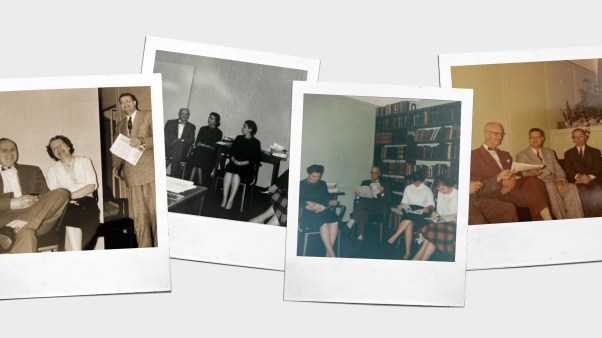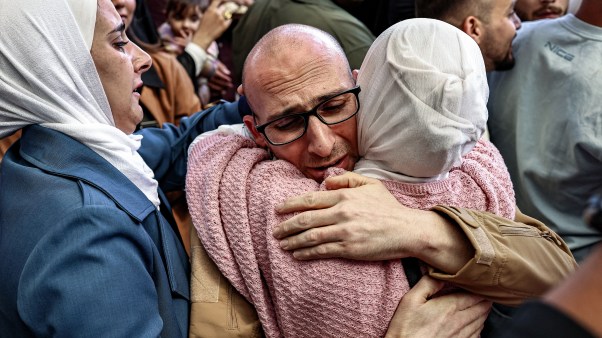The teaching of morals was considered to be an important part of the educational process prior to the First World War. Teachers as well as parents took the common-sense approach that training in such virtues as cleanliness, obedience, care of property, truthfulness, and dependability is important to a child’s development. And so they instructed children in these virtues and gave rewards for compliance and punishment for infractions.
But after the war, the mood of America began to change. Opposition developed to the teaching of morality. Part of this was a healthful criticism of some of the methods used, such as frightening the child into being good or administering harsh physical discipline. Part came as a result of studies showing that children who were enrolled in character-education classes, Boy Scouts, or Sunday school were no more likely to be honest in the classroom than those without these advantages (H. Hartshorne and M. May, Studies in the Nature of Character, three volumes, Macmillan, 1928–1930). Also, the thirties, forties, and early fifties were a time of optimism based on a philosophy of social evolution that said that people are getting better and better. It seemed, therefore, that they did not need specific training to improve. During this period the main thrust in education, other than teaching the necessary skills of reading, writing, and ciphering, was to promote social adjustment. If the child could get along with his peers, his teachers, and his family, he would develop into the kind of adult who was a good neighbor and respected citizen and would be a credit to himself and to his country. A preponderance of such well-adjusted adults would assure the kind of democratic living so highly prized.
But since World War II and the conflicts in Korea and Viet Nam, the Western world has undergone another change of thought. The optimism has faded; for some it has been replaced by apprehension and uncertainty. A look at the socially conforming members of the Nazi and Stalinist systems, at our own soldiers obeying orders at My Lai, at young people adhering to the expectations of subcultures that are in conflict with the larger society, makes us painfully aware that social conformity is not a substitute for adequate personal morality. And, as one observes the hollow lives of many people in our affluent society who are well respected by their friends and neighbors, it is evident that something other than social adjustment is badly needed. Add to this the rise in delinquency and crime, the breakdown of marriage and the home, Watergate, and other distressing signs of the times and apprehension may turn to alarm.
Now, once again, there is a demand for moral education in the classroom. More and more educators, philosophers, and psychologists are viewing it not as a panacea, but as a necessary part of the public-school curriculum. Within the past few years, numerous books and hundreds of articles have been written on the topic of moral education. The new college textbooks in education and psychology deal with it. A recent Gallup Poll showed that 79 per cent of those interviewed thought the schools should give instruction in morals and moral behavior. Among parents with children in public schools, the figure rose to 84 per cent.
Programs are rapidly being developed and adopted. The New York State Department of Education estimates that four-fifths of the state’s elementary and secondary schools offer some kind of program to help students clarify their values and measure their conduct. The Georgia State Board of Education has decreed that all public-school children be taught a respect for God and authority and an appreciation of concepts of right and wrong. The Tacoma, Washington, school district received a grant from the National Endowment for the Humanities for a pilot program, one that could become a model for schools all over the country. A number of elementary schools are using the Intergroup Relations Curriculum, developed by the Lincoln Filene Center for Citizenship and Public Affairs and supported by an HEW grant. At the high school level, there is the Carnegie-Mellon Social Studies Curriculum, which includes moral dilemmas as a basis for a discussion. Workshops and conferences on moral education are springing up throughout the nation.
The program instituted at any particular school depends on the age level of the students and on the preferences of the school board, principal, or classroom teacher. Let us look at the three types now in use.
First there is character education, a direct method that is similar to the approach taken in previous generations. The teacher tells the child what is right and what is wrong, and the child is to behave accordingly. There are rules to be learned, and obedience is important. The child is not to run in the halls, hit another child, or play in the restroom. He is to do the assigned work, tell the truth, and be moderately quiet. This monitoring of the child’s actions as a way of teaching morality has a number of advantages. It is the most natural way of directing his behavior and is used daily by both parents and teachers. It is based on the universally accepted premise that adults know better than children what is right and what is wrong. Directions and guidelines are essential for the proper development of the young person and for the smooth functioning of the home or the school. Also, the child’s behavior more directly affects others than do other aspects of the moral process, such as his feelings or thoughts.
Among the curricula materials available are those produced by the American Institute for Character Education, a non-profit educational foundation based in San Antonio, Texas. The group has been holding seminars and workshops since 1969. It emphasizes such standards as honesty, generosity, justice, honor, kindness, courage, tolerance, and good citizenship.
The “bag of virtues” approach, as character education is called by psychologists in the field, has its deficiencies as well as its virtues. We know that children do not learn morality in the way they learn the ABC’s. Only a minor portion of moral development could be said to be at the “facts” level. Those who do not act morally may know as well as anyone else what the standards of behavior are, but they simply choose not to abide by them or do not see why they are obligated to please others. True morality must be within the person, not imposed upon him by an outside source. In order to “internalize” the norms that parents and teachers present to him and thus develop a conscience, the child must identify with an adequate model of morality, not merely hear the precepts. The reason why the character-education approach appears to work as well as it does is that most children do identify with their parents and teachers. But the method alone has serious limitations.
A second approach to moral education is values clarification. This approach was developed by Sidney B. Simon of the University of Massachusetts and Louis E. Raths of the State University of New York, College of Fredonia. It offers a way of making classrooms more relevant to a world of change.
Seven criteria must be met for a child to choose a value. He must: (1) be able to choose freely, without the restriction of authoritarian rules; (2) consider alternatives; (3) choose only after thoughtfully considering the consequences of each alternative; (4) be happy with his choice; (5) affirm the choice publicly; (6) act upon it; and (7) incorporate the behavior into his life pattern. Areas such as money, friendship, love, leisure, politics, maturity, religion, and morals are fertile ground for values clarification. The teacher needs to provide the opportunity for a child to express his ideas, must accept these expressions non-judgmentally, and should encourage the student to consider the ideas of others.
Suppose, for example, that during a science class the subject of pollution arises. The teacher will discuss with the students the facts about pollution. What kinds of pollution are there? How do they come about? What are the consequences? Will decreasing one kind of pollution increase another kind? The facts are then integrated into concepts. What is the reasoning behind the concerns of the environmentalists? Of industry? Of the factory worker? What are your concerns? Before values can be chosen, there must be a firm basis of both facts and relevant concepts. The children can then talk about whether they would like to reduce the amount of pollution. If so, one child may decide she could wear a sweater instead of turning up the thermostat. Another may say he will ride his bicycle to school instead of being driven in the family car. A third child may say he will buy soft drinks only in returnable bottles. The children are reminded that their choices will count only as they repeatedly act upon them.
An example of a large public school system using this approach is Akron, Ohio. In 1969, the Akron schools and the local council of churches sent eight people to a workshop in values clarification. These eight then conducted a workshop in Akron attended by some sixty teachers, one from each school in the district. From this came a teacher’s guidebook, developed by a school committee and a council of churches committee. Then in several evening meetings, two hundred and fifty teachers were trained in values clarification, and they in turn conducted training sessions in surrounding areas.
The values-clarification approach does not suffer from the same problems as character education. It recognizes that if morals and values are to be meaningful and lasting, they must be affirmed by the person himself rather than being imposed upon him by someone in authority. However, for those who do not accept a relativity of truth and ethics, and most evangelical Christians do not, values clarification presents another sort of problem. The materials available for using this technique with such subjects as literature, mathematics, foreign languages, and physical education would meet with little objection. But in matters of morality and religion, the assumption that values are not absolute but are relative to individual preferences and feelings, which is a basic presupposition of values clarification, makes many of us uncomfortable.
Suppose that a child says cheating on a test was the right thing for him to do. He needs a passing grade and does not think he can get it any other way. After considering the alternatives and the consequences of each alternative, he still says he will cheat and plans to act upon this value repeatedly, if necessary. The adult, who has communicated to the child that he has a right to choose his own values and that his choice will be respected, finds himself in an untenable position. Parents and teachers hope that in the process of values clarification the child will choose the same values that they themselves hold, but this does not always happen.
A third approach to moral education in the schools is that of moral judgment. Curricular programs based on moral judgment are increasing in popularity. In developing the underlying theory, Lawrence Kohlberg, a psychology professor at Harvard who is considered by many to be the leading authority on the subject of morality, has drawn heavily from the keen observations of Jean Piaget. Piaget is a Swiss biologist and philosopher whose writings have contributed greatly to both psychology and education (especially notable is his The Moral Judgement of the Child, published in 1932). One of his points is that there are many ways in which older children differ from younger children in their responses to moral dilemmas.
The method used in the classroom is to present a story with a moral dilemma. Each child is then asked to state a position on the dilemma and to tell why he has taken that position. The story may be one used by Piaget a half century ago, one developed by Kohlberg, or one taken from a local newspaper. There are also booklets and filmstrips that present a variety of moral dilemmas.
One such story is of a man named Heinz who stole a lifesaving drug so that his wife would not die. The children are asked if he did right or wrong. It is the reasoning behind their answers rather than the answers themselves that is important. Teachers may also respond to the dilemma, but they are not to suggest that one response is right and another is wrong.
The teacher can fit each child’s response into one of six stages, later stages reflecting more mature reasoning than earlier ones. It is desired that a child move up from one stage to the next, and this may take place when he hears the reasoning of someone at the next higher stage. Since a typical classroom will have children giving statements at several stages of moral development, there is a “+1 model” for almost everyone. For those who are more mature in moral judgment, the teacher may act as the “+1 model.” Although indoctrination is not used, the teacher is aware that the fact that people do have different moral values does not mean that they ought to have different moral values. Ethical relativity and value neutrality, so prominent in the values-clarification approach, is not accepted in Kohlberg’s scheme.
At the first stage of moral judgment, the child interprets an action as good or bad according to its physical consequences. Avoidance of punishment and unquestioning deference to power are valued in their own right. When asked about Heinz, he may say, “he shouldn’t have done that because now he’s a thief and they might catch him and put him in jail.” The stage two child believes that right action consists of that which instrumentally satisfies one’s own needs. He may say that Heinz did right to save his wife’s life because “if she dies there will be no one to cook his dinner.” Kohlberg has done considerable cross-cultural research and finds that a typical stage two response in some countries is that Heinz did right because “if she dies it will cost him too much for the funeral.” At stage three a child is good in order to win approval. There is a conformity to expected behavior. He may say Heinz did wrong because a person should not steal or that Heinz did right because he should take care of his wife. In either case the judgment is made on the basis of an image of what society expects of its members. The stage-four child is oriented to law and order. Right behavior consists of doing one’s duty, showing respect for authority, and maintaining the given social order for its own sake. He will probably say that it was wrong for Heinz to steal. As one stage-four child put it, “It was wrong because he was breaking the law no matter how you look at it, and although I can see why he would have done it, I don’t think he was justified in doing it.” Those who progress to stage five believe that the purpose of the law is to preserve human rights; they may say that even though it was wrong for Heinz to steal, it would be more wrong to let his wife die. In the opinion of those who reach stage six, morality is grounded not in legality or specific rules but in abstract principles of justice and respect for the individual. In this light, Heinz was legally wrong but morally right.
Although the United States Constitution is based on stage five, most adult Americans are at stages three and four. The emphasis of our society is on being a good neighbor and obeying the laws of the land. Those who operate either lower or higher than convention dictates may pay the penalty. But unlike the stage-two person, who dislikes the law because it interferes with his personal freedom and selfish demands, the stage-five or stage-six person, having progressed through stages three and four, understands the reason for the law and respects it. If he cannot in all good conscience obey it, he is willing to suffer the consequences. As Martin Luther King, Jr., put it in his “Letter from a Birmingham City Jail” (1963), “One has not only a legal but a moral responsibility to obey just laws. Conversely, one has a moral responsibility to disobey unjust laws.… A just law is a man-made code that squares with the moral law or the law of God. An unjust law is a code that is out of harmony with the moral law.”
The moral-judgment approach recognizes that true morality comes from within the individual rather than being imposed upon him. Also, it is based on the premise that some values are to be preferred to others. It is in keeping with both developmental and philosophical principles and does not conflict with the teachings of major religions. The Scriptures show a similar hierarchy; for example, stage two, “them that walk after the flesh … and despise government” (2 Pet. 2:10); stage four, Pharisees who teach for doctrines “the commandments of men” (Mark 7; 7); and stage six, the teaching of Jesus that “whatsoever ye would that men should do to you, do ye even so to them” (Matt. 7:12).
Some will say that the place to teach the child right from wrong is in the home, not in the school, and one would be hard pressed to disagree. But what about the many children who do not receive moral instruction in the home? The parents may not be adequate models of moral maturity and may even encourage delinquency by showing little interest in the child or by being unwilling to monitor the child’s behavior. Far too few children are getting what they need in moral instruction in the home.
To what extent moral-education programs in the public schools will help to stem the tide of delinquency and to teach our young people to care for the rights and privileges of others as well as their own remains to be seen. But in these troubled times we need to try every avenue open to us. Some schools have reported fewer discipline problems and a more pleasant atmosphere after they set up a program in moral education. Teachers, as well as children, become aware that kindness and respect for one another (stage six) do more to bring about harmony and a favorable learning environment than either a situation in which everyone does “his own thing” (stage two) or the enforcement of a myriad of rules (stage four).
Whether or not one agrees with the particular methods being used, it is encouraging that many educators now recognize the need for moral education and are trying to do something to meet it.
D. Bruce Lockerbie is chairman of the Fine Arts department at The Stony Brook School, Stony Brook, New York. This article is taken from his 1976 lectures on Christian Life and Thought, delivered at Conservative Baptist Theological Seminary in Denver, Colorado.










